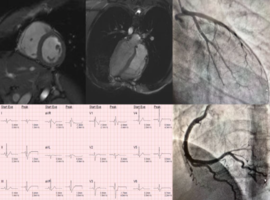Brandon K Eberl1, Giorgio Manferdelli2, Derek A Williams3, Nyal E Borges4, Benjamin D Levine2,5 and Kara N Goss2,6*
1Biomedical Engineering, Wake Forest University School of Medicine, USA
2Institute for Exercise and Environmental Medicine, USA
3Pediatric Cardiology, Wake Forest University School of Medicine, USA
4Adult Interventional Cardiology, Atrium Health Sanger Heart & Vascular Institute, Charlotte, USA
5Cardiology and Internal Medicine, University of Texas Southwestern Medical Center, USA
6Pulmonary and Critical Care Medicine, University of Texas Southwestern Medical Center, USA
*Corresponding author: Kara Goss, Pulmonary and Critical Care Medicine, University of Texas Southwestern Medical Center, Dallas, TX, USA.
E-mail: kara.goss@utsouthwestern.edu
Received: August 21, 2025; Accepted: September 06, 2025; Published: September 15, 2025
Citation: Eberl BK, Manferdelli G, Goss KN, et al. Coronary Microvascular Dysfunction and Exercise-Induced ST Changes Following Trauma in a Young Adult Born Preterm: A Case Report. Case Rep Clin Cardiol J. 2025; 5(4): 163.

